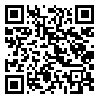Volume 64, Issue 12 (6 2006)
Tehran Univ Med J 2006, 64(12): 48-56 |
Back to browse issues page
Download citation:
BibTeX | RIS | EndNote | Medlars | ProCite | Reference Manager | RefWorks
Send citation to:



BibTeX | RIS | EndNote | Medlars | ProCite | Reference Manager | RefWorks
Send citation to:
Sarrafzadeh J, Ebrahimi Takamjani A, Khosravi A, Haery F, Seyed Hosseini L. Maximum Voluntary Isometric Contraction produced in three static lifting styles. Tehran Univ Med J 2006; 64 (12) :48-56
URL: http://tumj.tums.ac.ir/article-1-859-en.html
URL: http://tumj.tums.ac.ir/article-1-859-en.html
Abstract: (5876 Views)
Background: There is considerable professional debate over which technique is the best for lifting. The aim of this study is to compare three static lifting styles, the stoop, semi-squat and arm lift, using maximum isometric voluntary contraction (MIVC) as one indicator for recommending a lifting style.
Methods: Thirty healthy women (mean age: 22.37 years) participated in this quasi-experimental study. They performed the tests in static postures by standing on the platform of the Lift TrackTM and pulling the dynamometer of the instrument with maximum effort in three lifting styles: the stoop, semi-squat and arm lift. The subjects warmed-up by practicing the lifts first. The mean MIVC from the two other sets of lifts were used for statistical analysis by repeated measurements and SPSS (ver.10) software.
Results: There were significant differences between the MIVC of the three lifting styles in this study. The largest MIVC was for the semi-squat lift and was the least was for the arm lift (p<0.001). The MIVC of the stoop lift was larger than that of the arm lift (p<0.001).
Conclusion: The largest MIVC for the semi-squat lift suggests that this style is useful for lifting objects from the floor. The differences in biomechanical and muscle pattern activity changes could explain these results. It seems that activation of the quadriceps muscles in the semi-squat lift was a main factor for producing more MIVC, so when this style is recommended for lifting, attention to the power of the quadriceps is important.
Methods: Thirty healthy women (mean age: 22.37 years) participated in this quasi-experimental study. They performed the tests in static postures by standing on the platform of the Lift TrackTM and pulling the dynamometer of the instrument with maximum effort in three lifting styles: the stoop, semi-squat and arm lift. The subjects warmed-up by practicing the lifts first. The mean MIVC from the two other sets of lifts were used for statistical analysis by repeated measurements and SPSS (ver.10) software.
Results: There were significant differences between the MIVC of the three lifting styles in this study. The largest MIVC was for the semi-squat lift and was the least was for the arm lift (p<0.001). The MIVC of the stoop lift was larger than that of the arm lift (p<0.001).
Conclusion: The largest MIVC for the semi-squat lift suggests that this style is useful for lifting objects from the floor. The differences in biomechanical and muscle pattern activity changes could explain these results. It seems that activation of the quadriceps muscles in the semi-squat lift was a main factor for producing more MIVC, so when this style is recommended for lifting, attention to the power of the quadriceps is important.
| Rights and permissions | |
 |
This work is licensed under a Creative Commons Attribution-NonCommercial 4.0 International License. |





